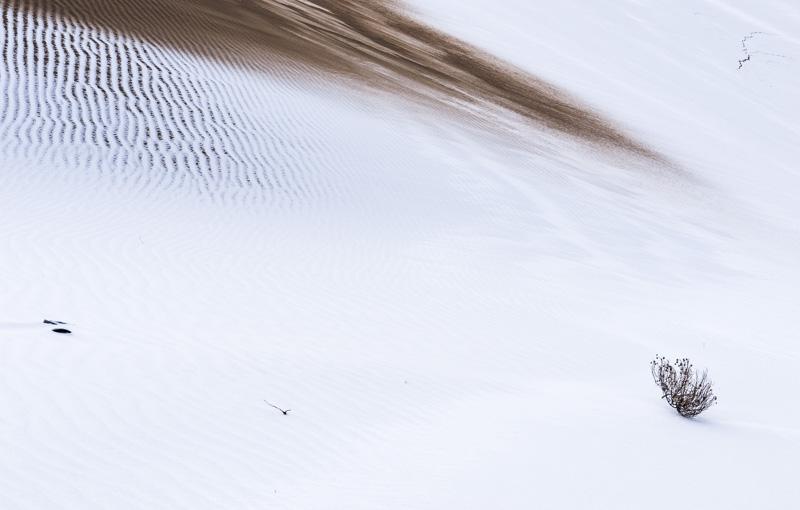Every Picture Is a Compromise
Lessons from the Also-rans
Most photography websites show the photographer's very best work. Wonderful. But that's not the full story of a creative life. If we want to learn, we'd better pay attention to the images that aren't "greatest hits" and see what lessons they have to offer. Every picture is a compromise — the sum of its parts, optical, technical, visual, emotional, and even cosmic – well, maybe not cosmic, but sometimes spiritual. Success on all fronts is rare. It's ok to learn from those that are not our best.
This is a series about my also-rans, some of which I've been able to improve at bit (i.e., "best effort"), none of which I would consider my best. With each there are lessons worth sharing, so I will.
Original digital captureWhat I saw that I liked:Last month, I mentioned Carl Chiarenza's book, Pictures Come from Pictures. Here is another example. I was in tghe Gobi Desert in Inner Mongolia and saw this weed in the snow (above). Click. What I don't like in the picture:It's okay, but nothing to get excited about. The concept I love, but the image is static. Only the sweeping line of snow at the top is really interesting. I took note and walked on. What I learned:Not far away, I saw (not surprisingly) another weed in the snow. Click. (at left). Now we're talking! The angle of the dune, the left lean of the weedy bush, the "ribs" in the sculpted sand, and that lovely crack in the upper right corner. This was what I wanted the first attempt to be. It failed (above), but it planted the idea. Pictures come from pictures. You may quote Chiarenza on that. 2nd Chances: What I might try nextThe one at left I used in Kokoro #013 - Life Lived in Moments. |


